If you’ve ever been to a well-stocked Asian grocery store, you’ll find that the noodle aisles pretty much dwarf what most Americans are used to when it comes to noodles. Somewhere on those aisles you will find a big selection of Glass noodles and you should buy them! You should also, therefore, know how to cook glass noodles!
I wanted to just focus on glass noodles for this write up because it’s something that isn’t used much in American kitchens, but is so versatile once you’ve tried it. If you’ve ever had a good Vietnamese noodle salad, they might be using a glass noodle, which is a pretty broad phrase in itself.
Glass noodles get their name from the fact that when they cook, they turn almost clear. It’s a beautiful noodle that can be used in a huge range of dishes from soups to salads to stir-fries.
Here’s my complete rundown on glass noodles and three easy ways to cook them. Start adding them to your meals today!
What are Glass Noodles?
As someone who is still learning about Asian cuisine and ingredients, I have an almost impossible time telling the difference between glass noodles and rice noodles. Sure, I can tell them apart once they are cooked, but in the package they look almost identical to me.
So, I always take a peek at the ingredients. Rice noodles will obviously have rice as the primary ingredient. Glass noodles will be some mix of potato starch and mung bean starch. I’ve never seen these starches in their raw form, but man can they make one cool noodle!
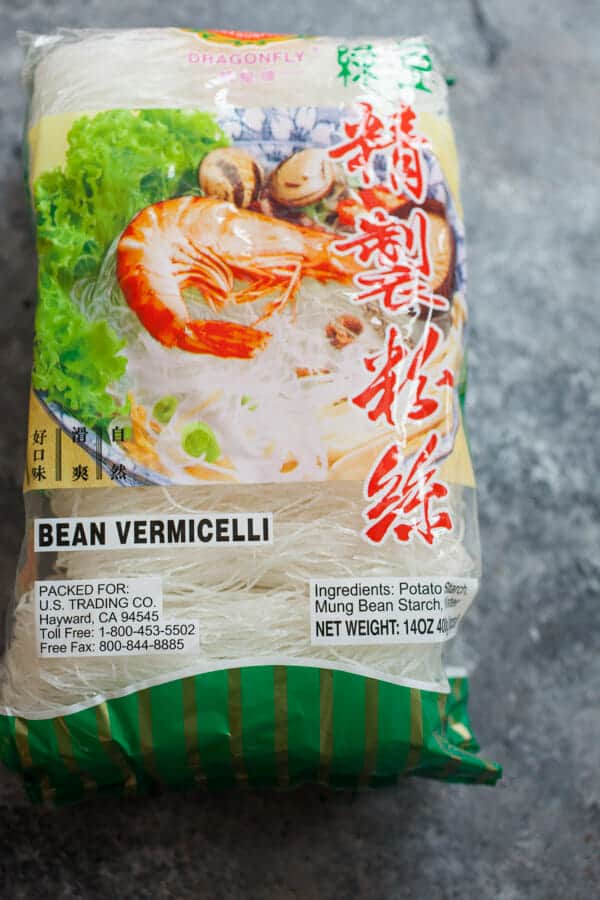
Glass noodles come in a variety of thicknesses, but I usually like a smaller diameter of noodle which is very versatile and cooks quickly. That said, I don’t usually go for the thinnest noodle in the aisle because it’s really thin. On this day I picked one labeled vermicelli which is about right.
This is what it looks like once I pulled it out of the package. They kind of spring all over the place so get ready!
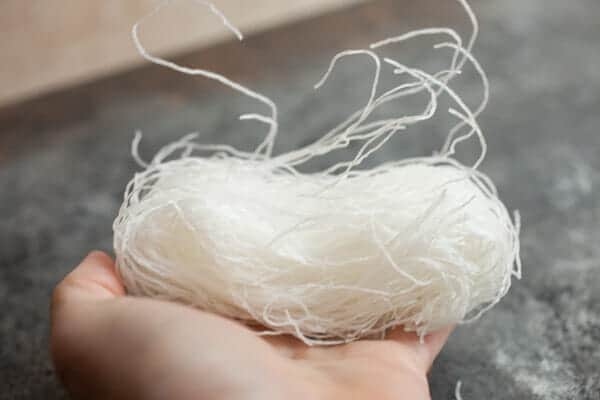
There are really three ways to cook glass noodles. Let’s dive in!
What are Glass Noodles Made of?
Glass noodles are generally made of a mix of potato start and mung bean starch. Of course the ratios of those two things can vary drastically depending on the brand of noodle you are using and the size of the noodle. In general though, all glass noodles will have these two ingredients.
The wonderful thing about these two ingredients is that when they are cooked, they turn transparent, but they are also very strong. These noodles don’t break as easily as you might think and they do a great job of absorbing sauces, juices, and soups.
How to Boil Glass Noodles
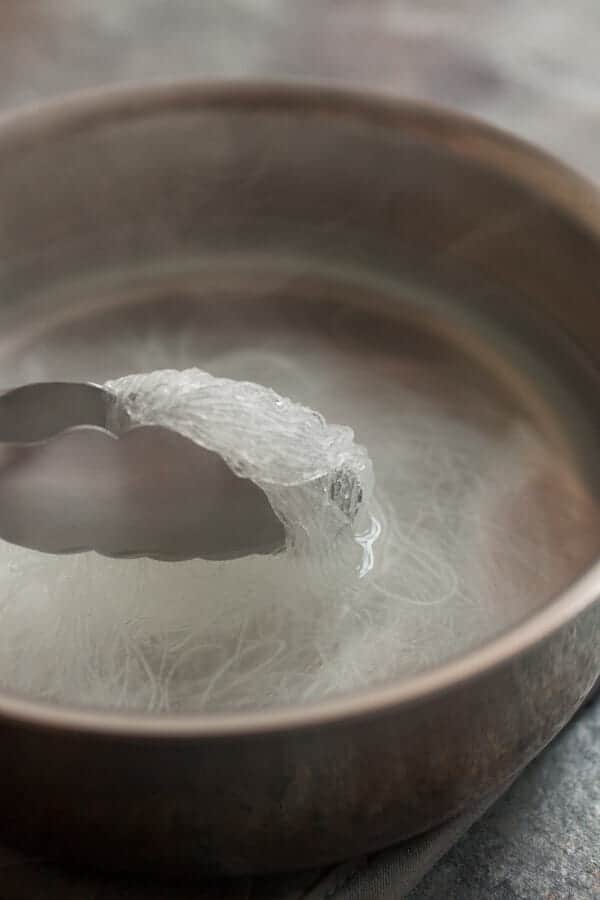
You might think that this is the easiest way to cook these noodles but it’s actually not. Boiling them for too long can really break them down (although glass noodles are sturdier than other noodles).
If you do want to boil them, 2-3 minutes will do the trick.
To be honest, I find boiling them to be a bit too harsh. The only time I boil noodles like this is if I’m adding them to a soup. I’ll toss a handful into a broth near the very end of cooking and it’ll round out a soup. No need to cook them separately!
If I’m using the noodles for a salad or other base, then I almost always use the soaking technique.
How to Soak Glass Noodles
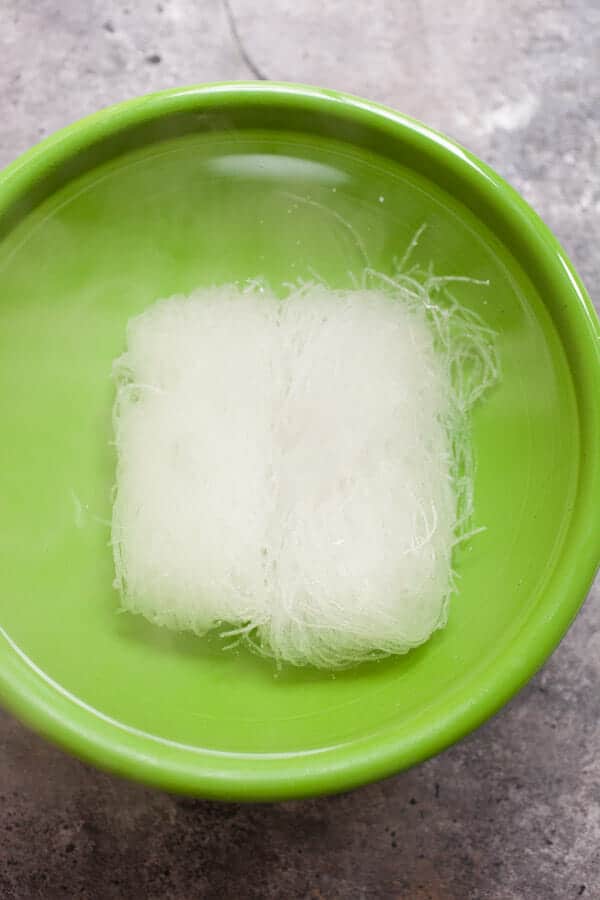
This is my preferred way to prepare glass noodles. Just add them to a large bowl and cover them with very hot water. Let them soak anywhere from 5-15 minutes. The longer they soak the more they will expand. They are much sturdier than you would think if prepared in this way and even after 15 minutes of soaking you’ll have really beautiful noodles that are perfect for tossing with a salad or something.
Once you drain your noodles, I recommend tossing them with some sesame oil or something to keep them from sticking!
Stir-Frying Glass Noodles
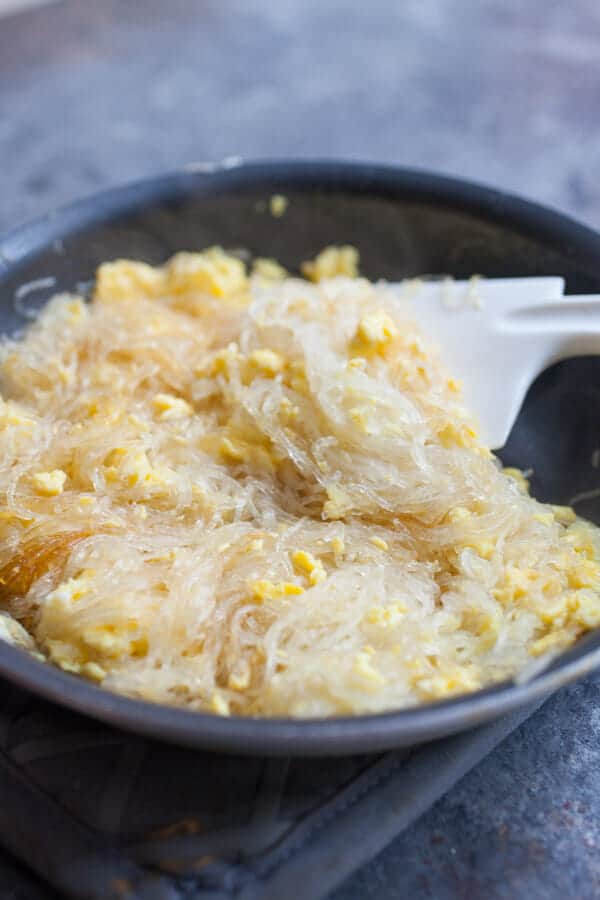
Stir-frying glass noodles is a great way to use leftover noodles. You have to either boil or soak them before you stir-fry them so it’s rarely the first way I’ll prepare the noodles. It’s an easy process though and I think the noodles stir-fry better than rice noodles. Add them to a hot skillet with a drizzle of oil (coconut or vegetable oil) and then add in any other add-ins you want. I usually go for a scrambled egg and then some soy sauce.
If cooked correctly, the glass noodles stay completely separate and basically soak up whatever flavor you serve them with.
Are These Noodles Gluten-Free?
In short, yes. They should all be naturally gluten-free since they are made from potato starch and mung beans, generally. That said, there are dozens of different glass noodles so I would always check the individual packaging not only for ingredients but to make sure the noodles were made in a factory that also makes gluten items.

In the winter, I’ll add these noodles to all types of warming dishes from soups to stir-fries and in the summer I’ll soak them and add them to cold noodle salads.
Glass noodles are a cheap and super easy ingredient to add to your cooking repertoire.
- Need another quick noodle? Check out these Sesame Angel Hair Noodles!
Are these something you’ve used before? Leave a comment!
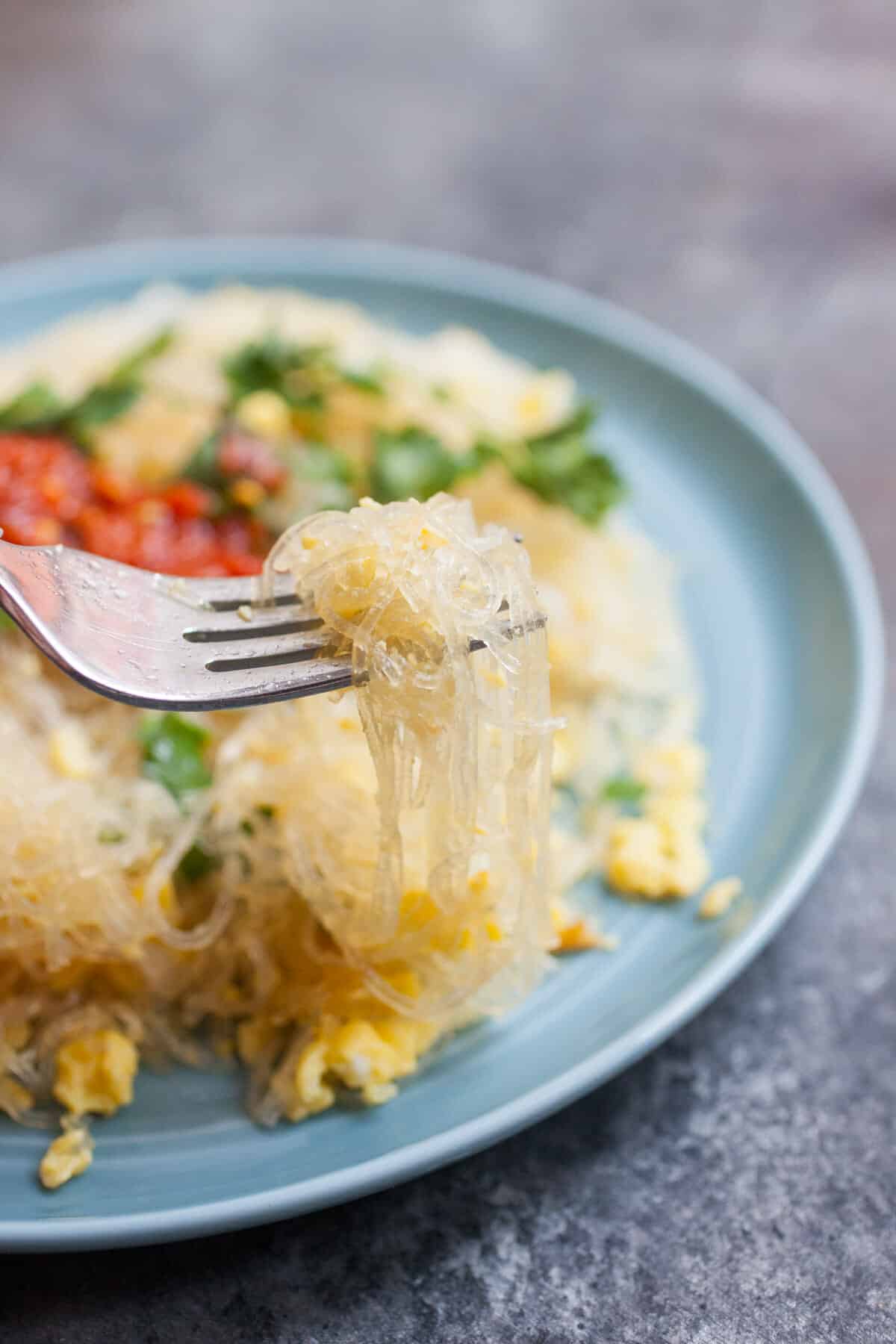
Here are a few recipes that you could add Glass Noodles to!
Don’t think that you have to just use glass noodles in Vietnamese dishes! I use them in all sorts of stir-fries, soups, and noodle dishes. Experiment! They are a great noodle!
Here are a few ways you can step out of the glass noodle box and experiment with them in different recipes!

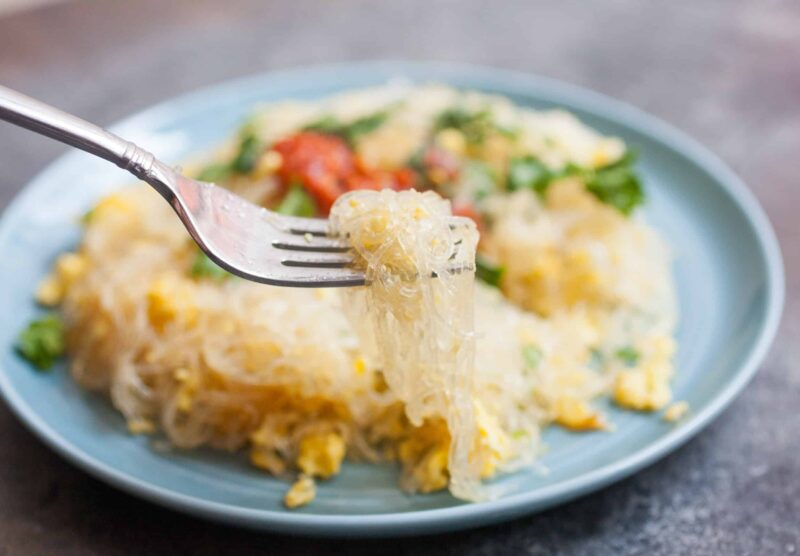
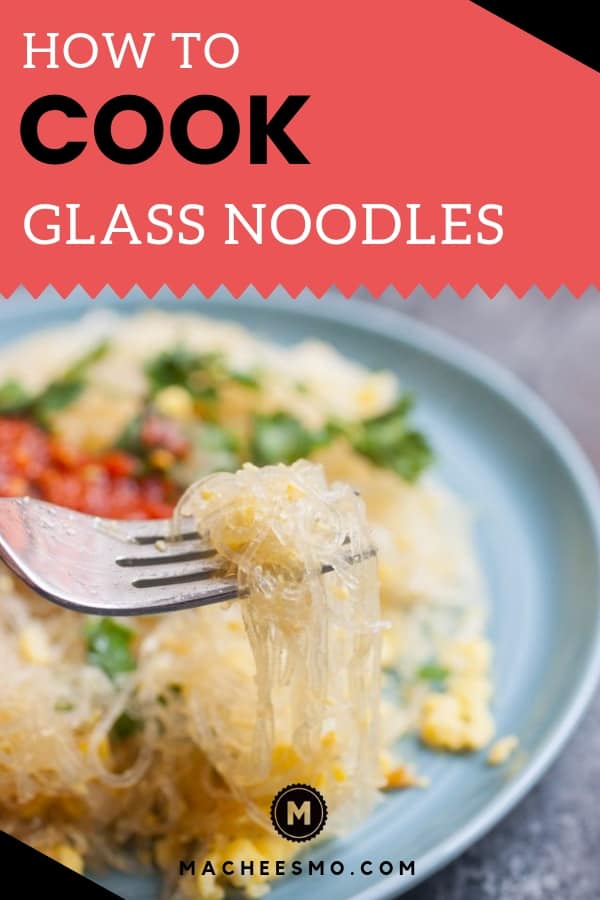


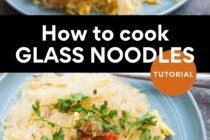
Dana
Are glass noodles gluten free?
Nick
Yep! I think almost always although it’s always a good idea to check the ingredients. :)
Wealtha Deakings
My grandkids love glass noodles! They love it in soups!
Catherine Lee
I love glass noodles! I fell in love with them as a kid when I first tried them at a Korean resteraunt with my parents. Yummy! (And there was not a thing served there I didn’t like to be honest, the resteraunt owners loved me!) Such versatile noodles!
GAUTAM Sinha
Thank you for the detailed write up on Glass Noodles. I had no idea of all that !! Will try it out SOON…..Cheers from India!!!!!
Wendy Watson
I love glass noodles, I usually buy the mung bean ones when I can get them here (I live in Bulgaria), so when they are in stock I buy about 20 packets never knowing when they will have them again & as of now I have run out. I make lots of stir fries, I drop my noodles into boiling water seasoned with a chicken stock cube, boil for about a minutes, remove them from the heat & then pop them into my stir fried vegetables & meat. Delicious.
Leah PettePiece
I love glass noodles and this was very helpful as I have left over pheasant that I want to make a oriental dinner out of tonight.
Zan
My favorite way to cook glass noodles is to drop them into the deep fryer. They puff up and make nice crunchie additions to salad. You don’t have to cook them first. Add a little salt. If eating them plain, yummy
Carole Bugge
Fantastic post – thank you!! I love to cook Asian, and this was so helpful.
Luke O’Neill
Thank you for this post… following your suggestions on soaking right now!
Sarah @ Allcookwarefind.com
I like glass noodles. Besides it’s gluten free, it’s also low in calories.
Trina Nimmons
I love glass noodles